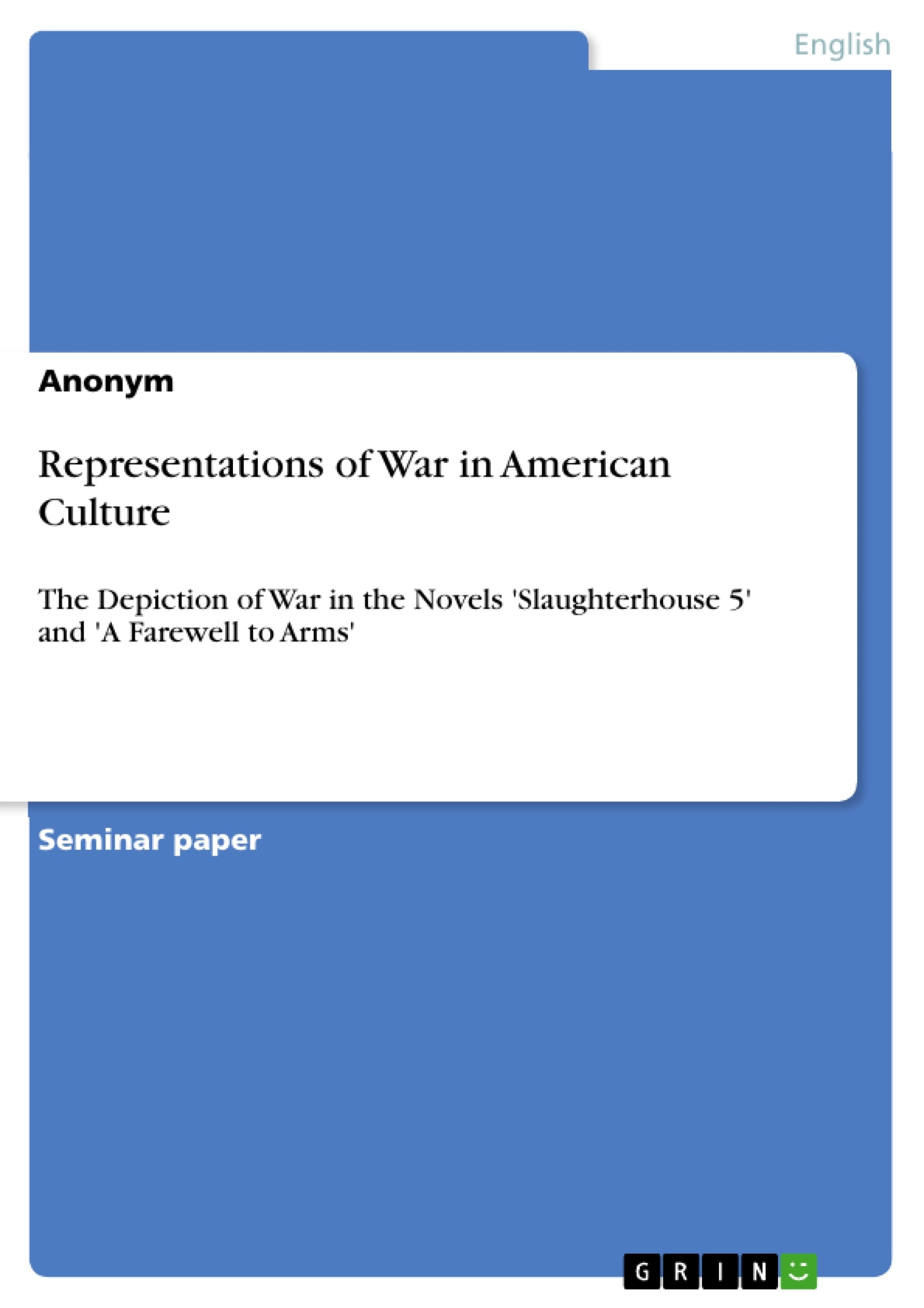The two novels A Farewell to Arms by Ernest Hemingway and Slaughterhouse-Five by Kurt Vonnegut have a lot in common at first sight. Both are books about wars in Europe written by American authors, and although the protagonists in both novels experience things that are partly very similar to their authors’ experiences, none of the novels is an autobiography, e.g. Hemingway’s story ends about two months before he went to Europe (Cooper, 33). Both of the novels deal not only with war stories but roam around other genres, be it a science fiction story in Vonnegut’s case or a love story in Hemingway’s. Both authors had direct and severe experiences with war. Despite of all similarities we also find very big differences in the depiction of war and the way the two authors cope with their shocking experiences. Both of the authors use a very own and subjective depiction of war in their novels and we find big differences in the way they describe war. This essay will take a closer look on how the two novels depict war in different ways and the messages that we can draw from their works.
Inhaltsverzeichnis (Table of Contents)
- THE AUTHORS AND THE NOVELS' BACKGROUNDS
- A COMPARISON OF THE TWO AUTHORS' WRITING STYLES
- OTHER LITERARY TECHNIQUES
- THE DEPICTION OF THE TWO MAIN CHARACTERS
- DEPICTION OF BATTLE SCENES
- OTHER DISTINCTIVE FEATURES IN THE NOVELS
- WAR OR ANTI WAR LITERATURE?
Zielsetzung und Themenschwerpunkte (Objectives and Key Themes)
This essay analyzes the depictions of war in Ernest Hemingway's *A Farewell to Arms* and Kurt Vonnegut's *Slaughterhouse-Five*, exploring the differences in their approaches and the messages conveyed through their narratives. The essay delves into the authors' personal experiences with war, their unique writing styles, and the contrasting ways they portray the psychological impact of conflict.
- The authors' personal experiences with war and how these experiences shape their narratives.
- The contrasting writing styles of Hemingway and Vonnegut, particularly their use of point-of-view and narrative structure.
- The portrayal of war's psychological impact on the main characters in both novels.
- The exploration of themes related to the nature of war and its effects on individual lives.
- The differing perspectives on war presented by Hemingway and Vonnegut, and their implications for the reader's understanding of conflict.
Zusammenfassung der Kapitel (Chapter Summaries)
The first chapter provides biographical information about Ernest Hemingway and Kurt Vonnegut, highlighting their respective experiences during World War I and World War II. The chapter explores how these personal experiences influenced their novels and their understanding of war.
The second chapter compares Hemingway's and Vonnegut's writing styles, focusing on their use of point-of-view, narrative structure, and language. The chapter analyzes how these stylistic differences contribute to the distinct portrayals of war in their respective novels.
The third chapter analyzes the depiction of battle scenes in both novels, exploring how Hemingway and Vonnegut use language, imagery, and narrative techniques to convey the physical and psychological realities of combat. The chapter also examines the contrasting perspectives on war that emerge from these depictions.
The fourth chapter explores other distinctive features of the novels, such as the portrayal of the protagonists' relationships and the themes of love, loss, and disillusionment. The chapter also discusses the use of literary techniques such as symbolism and irony in both novels.
Schlüsselwörter (Keywords)
The key themes and concepts explored in this essay include depictions of war, literary analysis, contrasting writing styles, personal experiences, psychological impact of conflict, narrative structure, point-of-view, and war literature.
- Quote paper
- Anonym (Author), 2006, Representations of War in American Culture, Munich, GRIN Verlag, https://www.grin.com/document/139830




